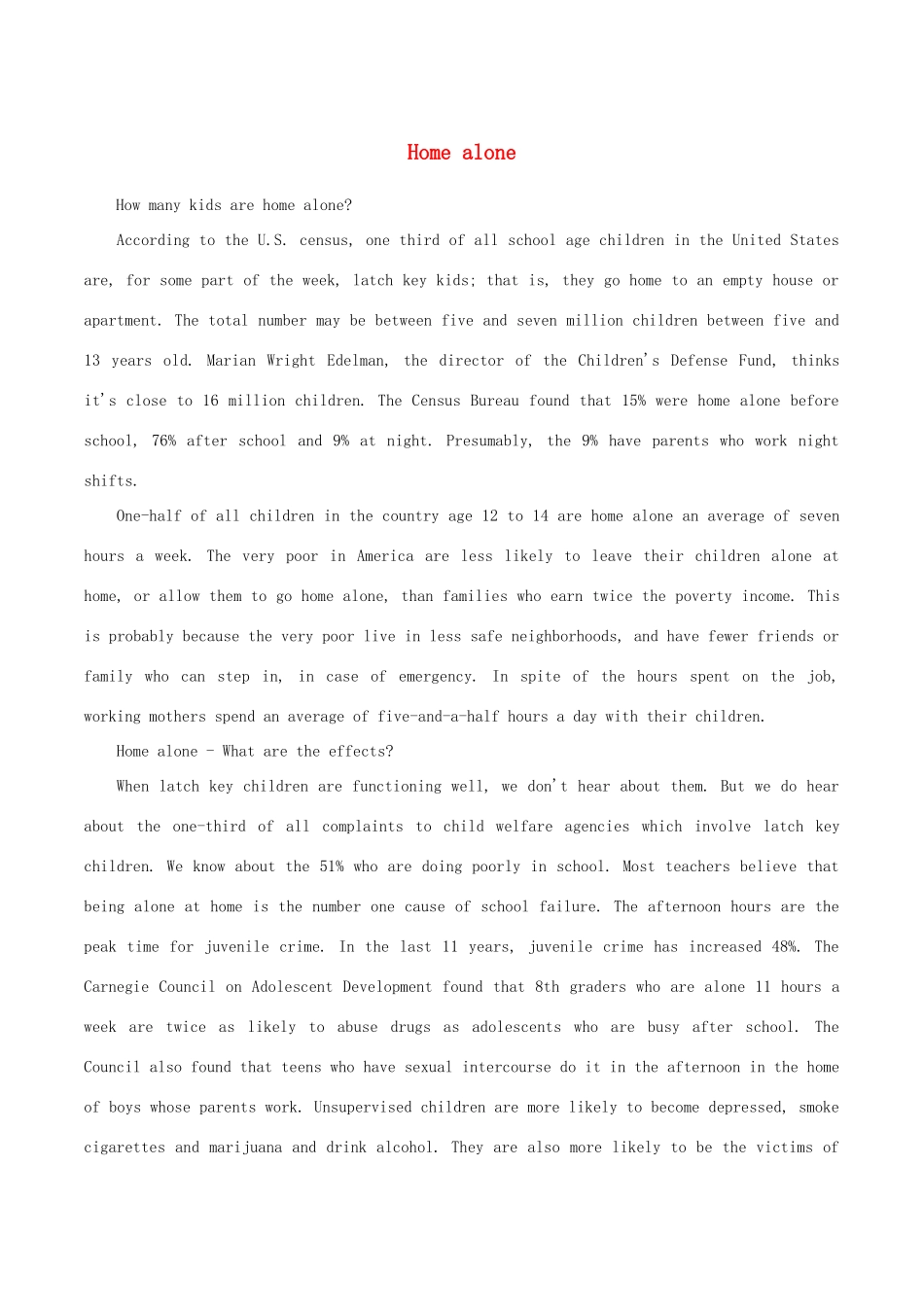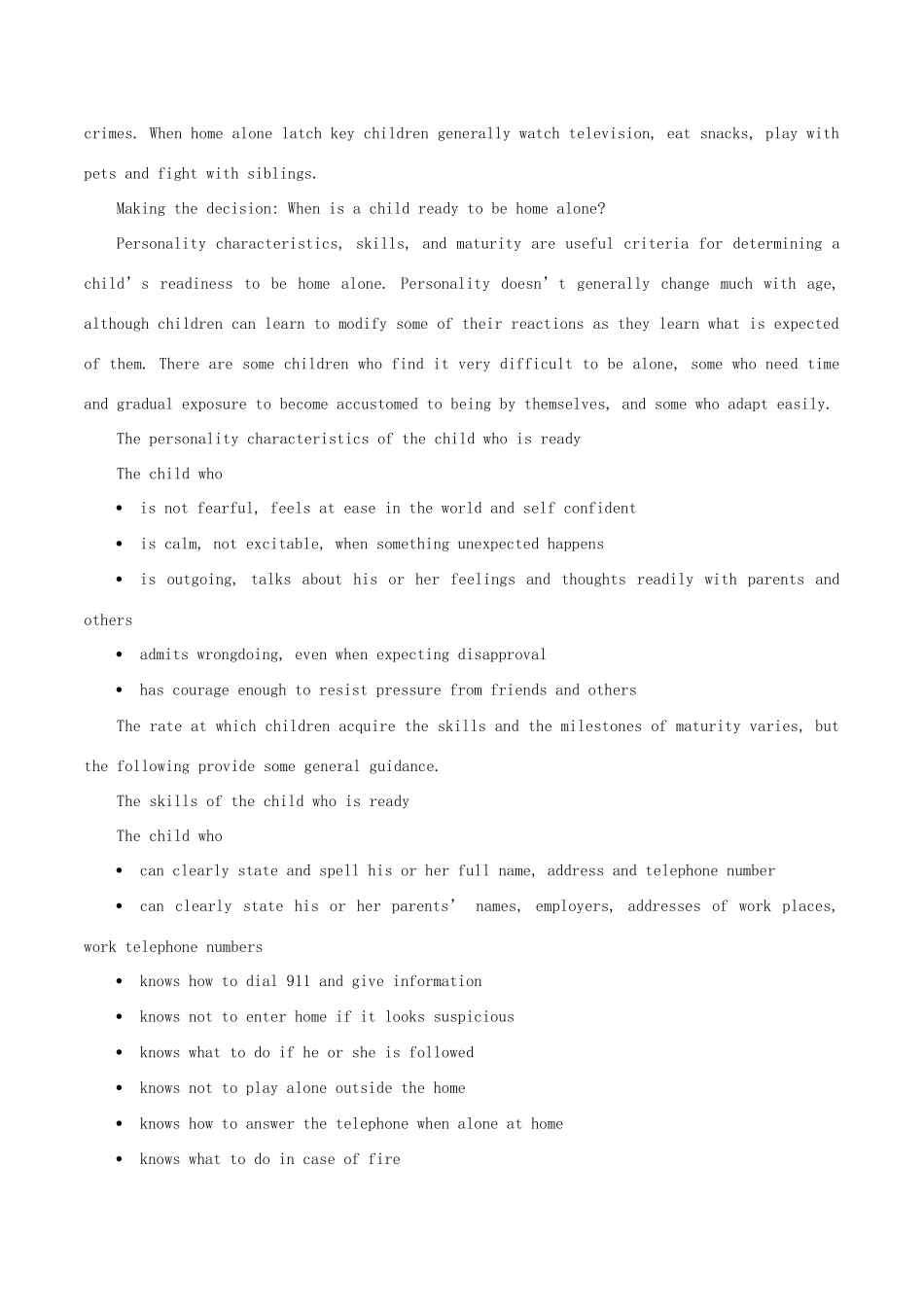Home aloneHow many kids are home alone? According to the U.S. census, one third of all school age children in the United States are, for some part of the week, latch key kids; that is, they go home to an empty house or apartment. The total number may be between five and seven million children between five and 13 years old. Marian Wright Edelman, the director of the Children's Defense Fund, thinks it's close to 16 million children. The Census Bureau found that 15% were home alone before school, 76% after school and 9% at night. Presumably, the 9% have parents who work night shifts. One-half of all children in the country age 12 to 14 are home alone an average of seven hours a week. The very poor in America are less likely to leave their children alone at home, or allow them to go home alone, than families who earn twice the poverty income. This is probably because the very poor live in less safe neighborhoods, and have fewer friends or family who can step in, in case of emergency. In spite of the hours spent on the job, working mothers spend an average of five-and-a-half hours a day with their children. Home alone - What are the effects? When latch key children are functioning well, we don't hear about them. But we do hear about the one-third of all complaints to child welfare agencies which involve latch key children. We know about the 51% who are doing poorly in school. Most teachers believe that being alone at home is the number one cause of school failure. The afternoon hours are the peak time for juvenile crime. In the last 11 years, juvenile crime has increased 48%. The Carnegie Council on Adolescent Development found that 8th graders who are alone 11 hours a...


